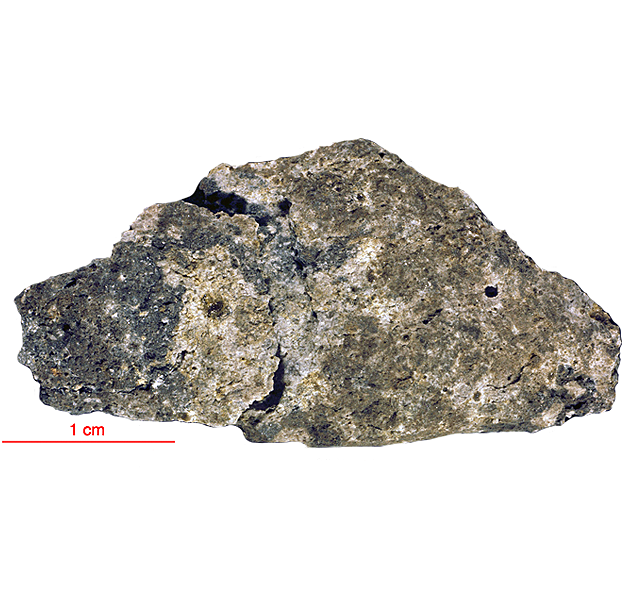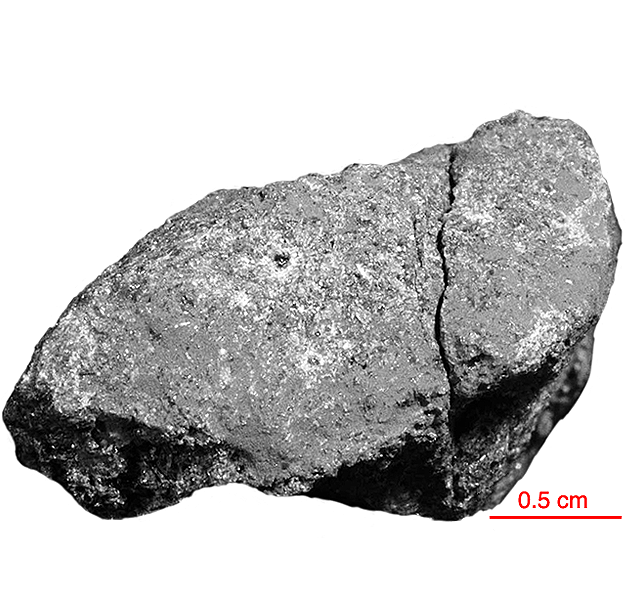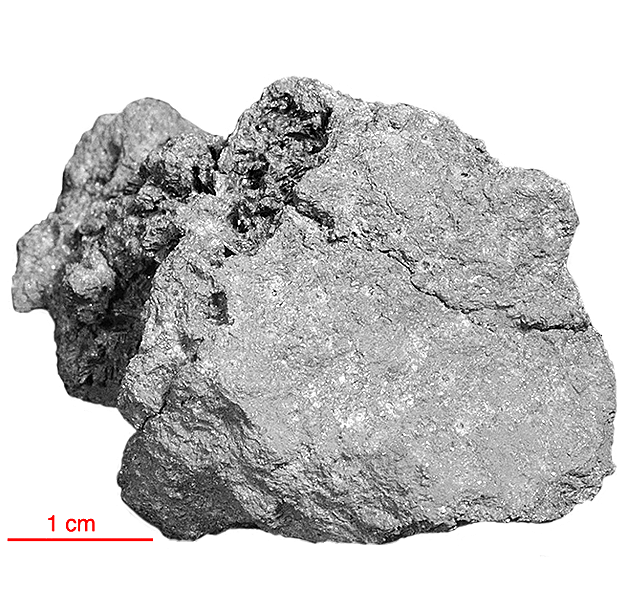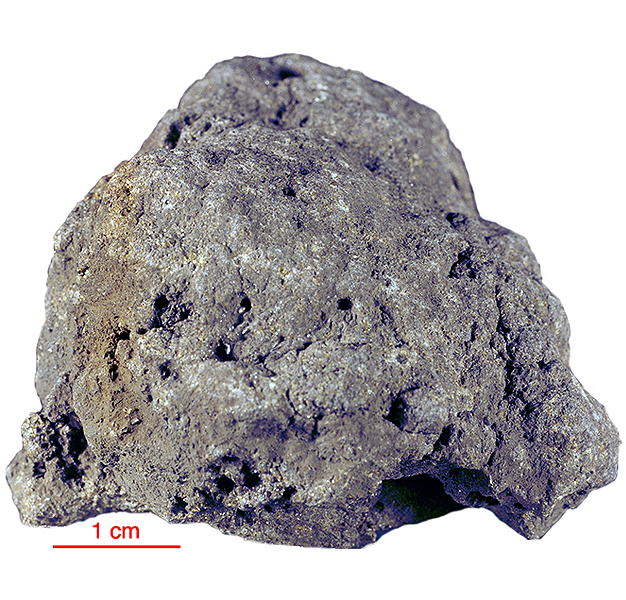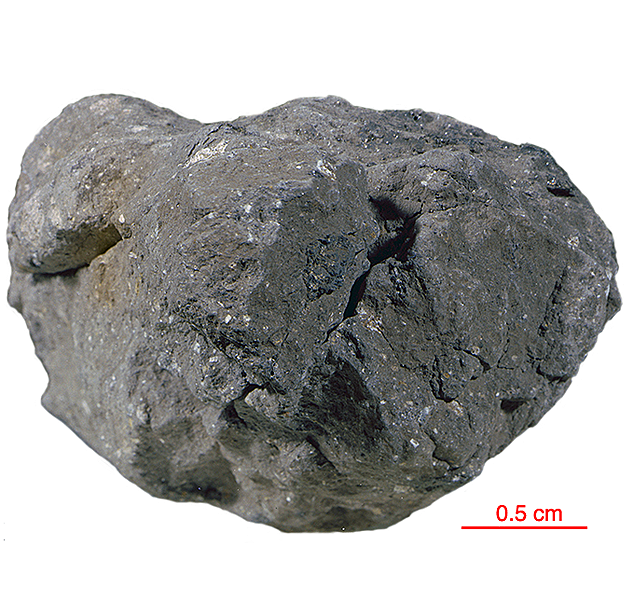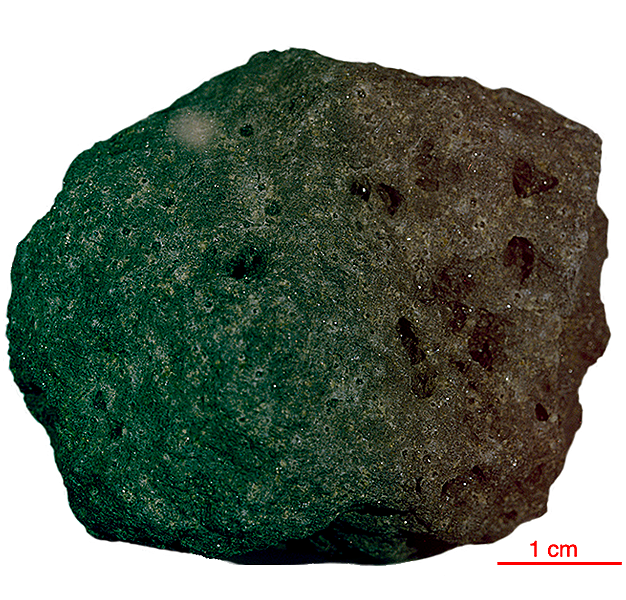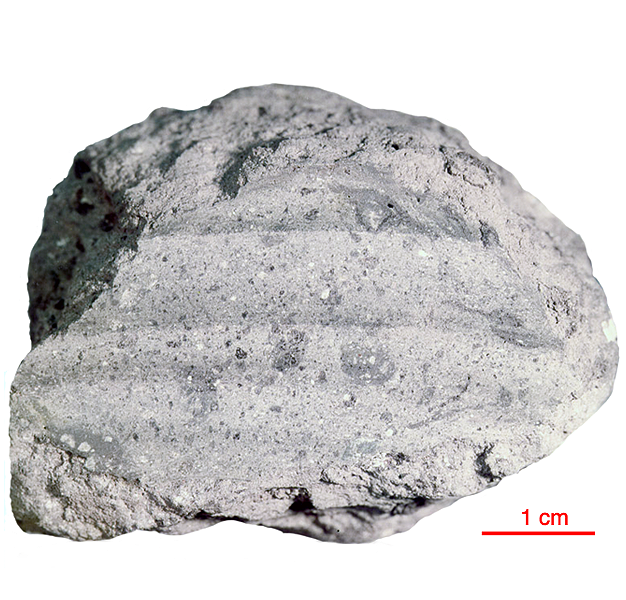
Fact sheet
12034 is a regolith breccia, but it is largely made up of components foreign to the Apollo 12 regolith and is from some distant, non-mare, regolith. It contains abundant KREEP basalt clasts; both as glasses and annealed lithic fragments. 12034 has not been dated. Sample 12034 is a fragmental matrix breccia similar in appearance to the Apollo 11 fragmental matrix breccias, but with a much lower porosity. It consists of a variety of glass, mineral and lithic clasts contained in a matrix of brown glass fragments and comminuted debris.
The texture of the matrix is seriate with fragments ranging in size from the limit of resolution up to 2 mm. Brown glass fragments dominate the less than 0.05 mm size fraction. The glass clast population in 12034 is extremely diverse, ranging from colorless, pale green, yellow or orange homogeneous glass to completely devitrified glass with included mineral grains . Subrounded to rounded fragments of maskelynite and devitrified maskelynite occur commonly as inclusions in the large devitrified glass clasts. Devitrification features in glass clasts take the form of variolitic clusters of plagioclase needles and more commonly axiolitic intergrowths of tightly packed plagioclase and pyroxene crystals. The lithic clasts in 12034 include basalts, dark-matrix breccia, cataclastic anorthosite and anorthositic gabbro. Rare basalts have textures ranging from ophitic to vitrophryic. Grey mottled basalt clasts in 12034 are made up of about half plagioclase and half low-Ca pyroxene and have the bulk composition of KREEP. They are probably fragments of impact melt.
The sample weighed 155 grams before analysis.
Further details of this and other Apollo samples are here: http://curator.jsc.nasa.gov/lunar/
Apollo 12 returned 34 kilograms of samples, including 45 rocks, samples of lunar 'soil', and several core tubes that included material from as much as 40 centimetres below the lunar surface.
Apollo 12 rocks were almost all basalts, with only two breccias in the returned samples. The basalts at the Apollo 12 site formed 3.1 to 3.3 billion years ago, roughly 500 million years later than the Apollo 11 basalts. Overall, there is much less of the element titanium in the Apollo 12 samples than in the Apollo 11 samples, which explains the more reddish colour of this region. The differences in age and chemical composition between the Apollo 11 and Apollo 12 samples demonstrate that mare volcanism did not occur as a single, Moon-wide melting event.
Apollo 12 was launched on 14 November 1969.

